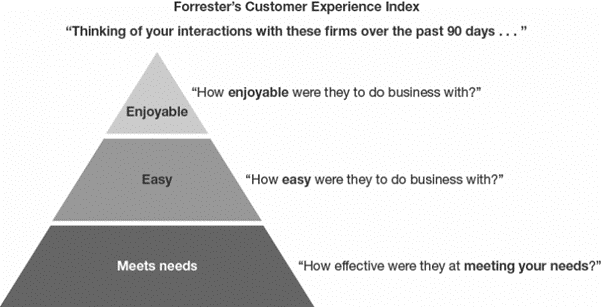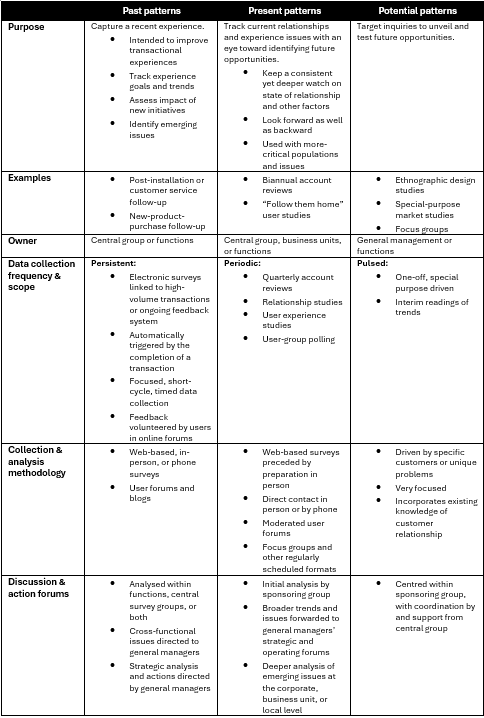“If brand experience is about making promises, customer experience is about keeping them.”
In today’s competitive landscape, consumers wield unprecedented power and choice, customer experience (CX) has subsequently emerged as a lever for brand supremacy. Broadly speaking, CX encompasses every interaction a customer has with an organisation, from browsing the website to purchasing a product, seeking support, and beyond, with Salesforce data suggesting customers use an average of nine touchpoints to engage with companies. Ultimately, CX can be regarded as the sum of perceptions and feelings a customer has about a brand based on these interactions. We’ve previously used the
example of Aesop to highlight the importance of aligning the brand to the customer experience. Aesop offers “skin, hair and body care formulations created with meticulous attention to detail, and with efficacy and sensory pleasure in mind.” The in-store experience for Aesop embodies “meticulous attention to detail” and “sensory pleasure”, with perfectly lined shelves with identical bottles, handwashing stations, strategic lighting and mix of textural elements like wood and stone. The online shopping experience follows the same themes, offering neutral tones and soothing sliding actions for menus and products. The value proposition of robust and brand aligned CX systems extends across multiple dimensions, these commonly centre around:
- Customer Loyalty: Exceptional CX fosters loyalty, transforming customers into brand advocates who not only repeat purchases but also evangelize the brand within their networks. Research suggests, CX drives over two-thirds of customer loyalty, which represents more than brand and price combined.
- Brand Differentiation: In a saturated market, CX serves as a potent differentiator, enabling brands to carve out a distinctive identity amidst the competition.
- Business Growth: Positive CX correlates with business growth, as satisfied customers drive revenue through repeat purchases and referrals. “Companies that are recognised leaders in CX achieved more than double the revenue growth of CX laggards between 2016 and 2021.”
- Reduced Churn: By addressing pain points and enhancing satisfaction, robust CX strategies mitigate churn, preserving the customer base and maximising lifetime value.
The most effective CX is not just about providing good service, it’s about creating positive emotions and lasting impressions. With a myriad of options at their fingertips, customers are inclined to gravitate towards brands that not only meet their needs but consistently elevate above them. Consider the CX Pyramid (first developed by research institute
Forrester).

This model frames consistently good customer experience as needing to satisfy each level of the pyramid sequentially; ‘Meeting customer needs’, ‘Making the experience easy’ and ‘Making the experience enjoyable’. To develop a great CX, a deep understanding of the customer is critical, as Forrester highlights “only your customers can tell you whether they found their experience useful, usable, and enjoyable. And that is totally a function of their perceptions”. Yet, relying on customers to offer this feedback directly can be difficult, studies showing that “customers rarely tell you that they’re unhappy. Only 4% of unhappy customers actually complain (1 out of 26). The rest will silently stop doing business with you…” Therefore, to best harness the benefits of CX, businesses must proactively seek out insights to help inform their offering. A variety of methodologies can be employed, such as surveys, focus groups and ethnography. Andre Schwager and Chris Meyer of the Harvard Business Review propose the evaluation of customer experience across three areas, past, present and potential:

Digging within these methodologies, certain measures can be extremely valuable to organisations when evaluating their CX.
Net Promoter Score (NPS) is a widely used metric that gauges customer loyalty and
Customer Journey Mapping is one of the best ways to understand customer preferences, pain points and opportunities to improve CX, from awareness and consideration to the purchase decision and retention. Other measures such as Customer Satisfaction Score (CSAT; the satisfaction level of customers based on a specific interaction) and Customer Effort Score (CES; the ease with which customers can achieve their goals while interacting with an organisation) can also help frame a brand’s understanding of their CX.
“Although companies know a lot about customers’ buying habits, incomes, and other characteristics used to classify them, they know little about the thoughts, emotions, and states of mind that customers’ interactions with products, services, and brands induce. Yet unless companies know about these subjective experiences and the role every function plays in shaping them, customer satisfaction is more a slogan than an attainable goal.” – Schwager and Meyer, 2007
A great customer experience can be paramount for brand success. Organisations that prioritise, track, and seek to improve their CX are likely to see the benefits of customer loyalty, differentiation, and business growth. Want to know more about how Square Holes can help your business track and improve your CX?
Head here This model frames consistently good customer experience as needing to satisfy each level of the pyramid sequentially; ‘Meeting customer needs’, ‘Making the experience easy’ and ‘Making the experience enjoyable’. To develop a great CX, a deep understanding of the customer is critical, as Forrester highlights “only your customers can tell you whether they found their experience useful, usable, and enjoyable. And that is totally a function of their perceptions”. Yet, relying on customers to offer this feedback directly can be difficult, studies showing that “customers rarely tell you that they’re unhappy. Only 4% of unhappy customers actually complain (1 out of 26). The rest will silently stop doing business with you…” Therefore, to best harness the benefits of CX, businesses must proactively seek out insights to help inform their offering. A variety of methodologies can be employed, such as surveys, focus groups and ethnography. Andre Schwager and Chris Meyer of the Harvard Business Review propose the evaluation of customer experience across three areas, past, present and potential:
This model frames consistently good customer experience as needing to satisfy each level of the pyramid sequentially; ‘Meeting customer needs’, ‘Making the experience easy’ and ‘Making the experience enjoyable’. To develop a great CX, a deep understanding of the customer is critical, as Forrester highlights “only your customers can tell you whether they found their experience useful, usable, and enjoyable. And that is totally a function of their perceptions”. Yet, relying on customers to offer this feedback directly can be difficult, studies showing that “customers rarely tell you that they’re unhappy. Only 4% of unhappy customers actually complain (1 out of 26). The rest will silently stop doing business with you…” Therefore, to best harness the benefits of CX, businesses must proactively seek out insights to help inform their offering. A variety of methodologies can be employed, such as surveys, focus groups and ethnography. Andre Schwager and Chris Meyer of the Harvard Business Review propose the evaluation of customer experience across three areas, past, present and potential:  Digging within these methodologies, certain measures can be extremely valuable to organisations when evaluating their CX. Net Promoter Score (NPS) is a widely used metric that gauges customer loyalty and Customer Journey Mapping is one of the best ways to understand customer preferences, pain points and opportunities to improve CX, from awareness and consideration to the purchase decision and retention. Other measures such as Customer Satisfaction Score (CSAT; the satisfaction level of customers based on a specific interaction) and Customer Effort Score (CES; the ease with which customers can achieve their goals while interacting with an organisation) can also help frame a brand’s understanding of their CX.
Digging within these methodologies, certain measures can be extremely valuable to organisations when evaluating their CX. Net Promoter Score (NPS) is a widely used metric that gauges customer loyalty and Customer Journey Mapping is one of the best ways to understand customer preferences, pain points and opportunities to improve CX, from awareness and consideration to the purchase decision and retention. Other measures such as Customer Satisfaction Score (CSAT; the satisfaction level of customers based on a specific interaction) and Customer Effort Score (CES; the ease with which customers can achieve their goals while interacting with an organisation) can also help frame a brand’s understanding of their CX.



